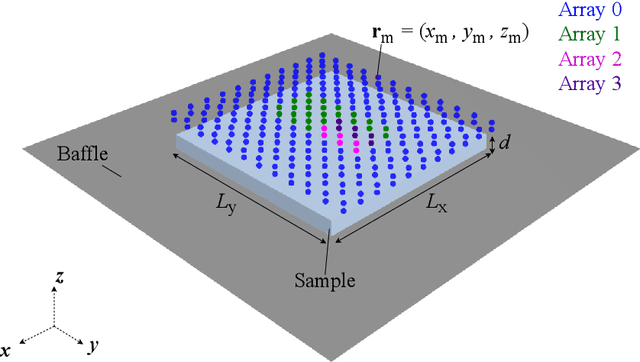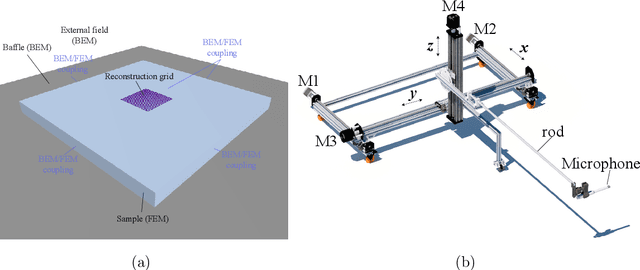Carlos Resende
In situ sound absorption estimation with the discrete complex image source method
Apr 17, 2024



Abstract:Estimating the sound absorption in situ relies on accurately describing the measured sound field. Evidence suggests that modeling the reflection of impinging spherical waves is important, especially for compact measurement systems. This article proposes a method for estimating the sound absorption coefficient of a material sample by mapping the sound pressure, measured by a microphone array, to a distribution of monopoles along a line in the complex plane. The proposed method is compared to modeling the sound field as a superposition of two sources (a monopole and an image source). The obtained inverse problems are solved with Tikhonov regularization, with automatic choice of the regularization parameter by the L-curve criterion. The sound absorption measurement is tested with simulations of the sound field above infinite and finite porous absorbers. The approaches are compared to the plane-wave absorption coefficient and the one obtained by spherical wave incidence. Experimental analysis of two porous samples and one resonant absorber is also carried out in situ. Four arrays were tested with an increasing aperture and number of sensors. It was demonstrated that measurements are feasible even with an array with only a few microphones. The discretization of the integral equation led to a more accurate reconstruction of the sound pressure and particle velocity at the sample's surface. The resulting absorption coefficient agrees with the one obtained for spherical wave incidence, indicating that including more monopoles along the complex line is an essential feature of the sound field.
 Add to Chrome
Add to Chrome Add to Firefox
Add to Firefox Add to Edge
Add to Edge